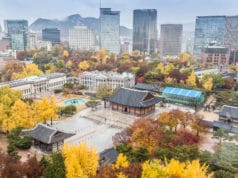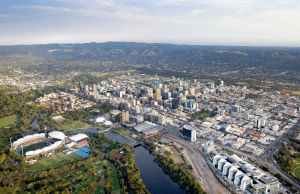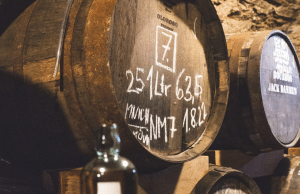Yes, being the centre of Baranja and Slavonia, Osijek is overlooked as a meetings and tourist destination. Croatia is not only the Mediterranean as it once was, but also the Baranja plains, Kopacki Rit and Drava, which symbolically connects the twinned towns of Maribor and Osijek and gives the town a unique character and softness.
The landscape is reminiscent of the Slovenian Prekmurje, as evidenced by the ubiquitous storks, recently harvested wheat fields and romantic sunflowers – it is a melancholic landscape for which we can say that it has a soul. Similarly, the soft Slavonian soul hosts tourists and meeting guests openly and generously.
Things are going smoothly and calmly without the metropolitan neurosis. It is perfect for an escape from the routine. It seems that the quality of life here is at a high level. Being on the plain allowed for an unlimited expansion and green areas and parks to define the image of the town. Everything is surprisingly clean and well kept. Urban transport is dominated by the nostalgic and sustainable tram. The plain is also the main reason for the ubiquitous bicycles, the 2012 season fashion trend being for retro bikes.
The town is best known as a major regional centre of Slavonia where the most important regional granaries are located, and many remembering the former Yugoslavia will also know the name of the villa Tikveš, where Marshal Tito also lived, and by their compulsory elementary school geographical knowledge also know of Kopački Rit, which is the main element of landscape diversity.
The confluence of the Drava and the Danube is the main component of water-based high adventure and charm. Both rivers exhibit the typical lowland landforms, such as river terraces, marshes and wine hills in the background of Kopački Rit, which as the inner delta of the Danube and the Drava is unique in Europe and represents the largest wetland and floodplain in Europe. Biological diversity is reflected in over 2,000 biological species living in the park. This makes it ideal for a variety of sustainable incentive programmes, easily accessible by bicycle and in a very natural state – a true ecological gem.
The historical division of Baranja between Hungary and Yugoslavia at the time of the Yugoslavian Kingdom has brought many Hungarians to the city. Today, they live together in harmony with the Croats, as evidenced by bilingual inscriptions and restaurant names.
The adventure and landscape diversity of the destination is defined by the Kopački Rit national park. A visit to the park can be organised or it can also be visited individually following the well-groomed trails of the floodplain area between the Drava and the Danube.
Unfortunately, there are also some noticeable consequences of the recent war, such as many areas that have not yet been cleared of mines. It is best to visit the park by bike, as the bike paths are well-marked and not too demanding.
The sense of safety in the town is remarkable and in midsummer the city is buzzing with cultural and other events, the peak being during the “Osijek year.” It seems that the town was tailor-made for its population and the opportunities for recreation are endless. Next to the main convention Hotel Osijek there is a small marina from which adventurous souls can set out to explore the Balkans Amazonia. In terms of air connections God seems to have forgotten the town! Currently you can only fly on the internal flight from Split once a week. Ryanair has also bypassed Osijek. So one has to reach Osijek via the excellent highway that takes approximately three hours from Zagreb. On the highway you needn’t fear jams, not even at the rush hour.
The rail connection is also good; very important too is the access via the two rivers. Osijek was once considered a kind of Croatian Manchester, as it was the industrial centre of the wider region. This development was once supported by a solid transport infrastructure.
Continental tourism in Croatia seems to have been neglected. The fact is, however, that judging by what we have seen, the natural, ecological and cultural potential for the tourism development of Osijek is remarkable. Partially the development was stopped by war, which in the summer of 1991 almost completely destroyed the town, but the town successfully resisted the aggression of the “large Serbia” and prevented the Vukovar scenario from taking place.
The consequences of the war are now only occasionally seen on buildings. Baranja with Osijek is the pearl of Croatian rural tourism. Its indigenousness can be felt and touched. Unfortunately, the majority of the approximately 50,000 tourists in the town are Croatians, with only a few foreign guests. The town has some 373 hotel rooms, the majority of which are in hotels suitable for conference tourism. The river promenade, running from the Hotel Osijek to the medieval fortress, is full of cafes and in the height of summer the promenade is full, despite the searing heat. Cafes of all kinds and for all tastes dominate. It seems that Osijek is the epicentre of cafes of the wider region.
Osijek is suitable for smaller conferences and incentive groups of up to 200 participants. The main meetings and conferences provider in the town is the Hotel Osijek. It has a multifunctional divisible hall which can accommodate up to 200 participants. The quality of service of the hotel is at the level of other European conference hotels, with an added dose of very friendly staff.
You will probably not go to Osijek for the classical convention tourism attributes – accessibility and facilities. This is a boutique convention destination that won’t leave you cold if you don’t like the mass convention tourism, have an exploring spirit and are looking for something special.
If the town lacks modern convention facilities, it is overflowing with a variety of special venues as a result of its rich history. The baroque Fortress (Tvrđa), which was a military, administrative and business centre in the 18th century, calls for the organisation of events in the main square or in one of the museums or University buildings around it.
The real gems are hidden around the town: Zmajevec is one of them. Into the sandstone romantic wine cellars have been carved, which appear of a modest size from the outside, but in fact real galleries hide inside. The restaurant Josić is an exquisite authentic restaurant which combines traditional fish dishes, stews and deer, a superior space for the most demanding groups. The surrounding area is the epicentre for “gastro-nomads”. We also recommend the Restaurant Kormoran, if you like fiš stew or Kovač Cardo, where it is said that even Hungarians come for stew. Also very good is the restaurant “Zimska luka« (Winter harbour) at the Osijek Hotel. The offer for demanding corporate groups is not lacking.
Unfortunately, the offer remains totally unconnected, scattered and disorganised for conventions and congress clients. The region, which calls out for incentive groups, does not have serious incentive agencies; a Convention Bureau does not exist. Consequently, you will be left to create convention programmes yourself or with the help of rare meeting and convention professionals.
Osijek is a special town that you can quickly fall in love with, as it enters your bloodstream. The somewhat slow pace of life is relaxing and creates a feeling of ease. Besides, the ratio between authenticity, quality and price is reasonable and far more favourable than in Mediterranean Croatia. Unfortunately, because of the process of transition from the post-industrial town and the war, it is relatively undeveloped in meetings and conventions terms. Given what we have written above and the existence of its own university with numerous faculties and other institutions, which have some potential congress ambassadors, the town is one of the hidden convention gems of Croatia.
Destination Grade: 3,26 – RECOMMENDABLE CONVENTION DESTINATION
Meaning of Grades:
5 Excellent Convention Destination
4 Quality Convention Destination
3 Recommendable Convention Destination
2 Average Convention Destination
1 so so
Individual Grades:
- Natural and Cultural factors 4,0
The most typical Croatian Pannonian area is among the most blessed Croatian provinces, which together with its position at the crossroads of three nations has created an extremely varied and socially attractive space. By way of illustration: the fertile agricultural areas, thermal waters, geographic location at the junction of the three nations, a position on the major transportation routes and the culture of co-existence and experiential diversity.
- General and Transport Infrastructure 3,1
Despite the good road and rail infrastructure, the majority of convention tourists arrive to a destination by air. Nonexistent air accessibility of Osijek, despite the recently renovated international airport, is the main obstacle to serious development. A second precondition would be building a passenger port for river cruisers on the Danube. Until then, Osijek will remain above all a regional and local convention centre.
- Tourist Infrastructure 3,5
The basic accommodation infrastructure is reasonably well developed and good quality. Restaurants with above average cuisine stand out. The offer of bars and cafes and the general oeno-gastronomic offer is good. The weakest part of the offer is the lack of receptive DMC Agencies and a more proactive destination management.
- Convention Infrastructure 2,2
Currently deserves the highest criticism. The destination has practically only one true convention hotel. There are no local specialised DMC Agencies. Incentive providers are also nonexistent. A Convention Bureau for Osijek or the whole region is missing. Consequently, the development and variety of convention products is small. Because of all that we have written above, it is a great opportunity for development at the same time.
- Subjective Grade 3,5
It seems that Osijek lives and operates on the nostalgic pulse. Its identity was shaped by natural features and turbulent social processes. For serious development of convention tourism this is not enough. The town has an excellent strategic position with numerous opportunities for the development of convention tourism, but it could also quickly become a convention blind alley. The most work could be done on the image of the destination, which besides the transport infrastructure is the main reason for the current lack of any competitive edge.
Comparison with the Region:
To most people, the extreme north-eastern part of Croatia is the most marginal, border, multi-faith, multicultural and the most poorly known region. Its character is carved by the Drava and Danube rivers along with its symbolic, functional and aesthetic value. Its self image is one of isolation and the feeling of living on a desert island of convention tourism, in which only a small number of meeting planners and organisers are interested. Because of its geographic position, it is economically and politically far from the capital and as a consequence also undeveloped as a convention destination. The focus of the problem is a stereotypical feeling of neglect. Overlooking this, Osijek is one of the freshest and most sustainable Croatian meetings destinations with no real competition in the region.
Cool meetings:
BARANJA KULEN is a spiced, slightly hot sausage of the typically red colour.













